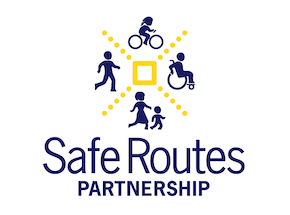The Fastest Way to Fall in Love with a City Is on Two Wheels
That afternoon, I had joined Todd Scott of Detroit Greenways, a nonprofit dedicated to creating a robust bike network that connects neighborhoods, enhances quality of life, and drives community-centered economic growth, for a tour of “the real Detroit”. For four hours, we explored Detroit on two wheels: cruising along the riverfront, visiting vibrant community gardens, taking a pit stop at Eastern Market, and rolling through the Dequindre Cut.
As we rode, Todd shared stories about the city’s “slow roll” culture, an inclusive movement of people coming together on bikes to celebrate Detroit’s spirit. He described the plans for the Joe Louis Greenway, a visionary project to unite neighborhoods through a network of bikeable, walkable paths. What stood out most was how different Detroit felt from its media portrayal at the time—stories of decay and despair didn’t match the city I was experiencing firsthand – a place overflowing with creativity, neighborhood ingenuity, and community connection.
It was, quite simply, “love at first bike.”
On a bike, you experience a city at a human scale. You feel the energy of an activated alley now filled with people instead of dumpsters, take in the aquamarine shimmer of the Detroit River under a sunny June sky, and stop at a bakery when a cookie in the window catches your eye. You hear music spilling out of restaurants and exchange smiles with locals. Riding through low-stress paths like greenways and bike lanes, you’re free to connect—with a place, with its people, and even with yourself. There is a simple pleasure in riding a bike.
Eight years and countless work trips later, I still think of that ride. Not because it’s unique, but because of how universal this feeling is. Think of your favorite vacation memories. Chances are, they involve places that are easy to walk, bike, or roll: riding cruiser bikes along the beach, the sun warming your skin and a towel tucked under your arm; strolling down a lively boardwalk lined with shops, restaurants, and activities; window shopping as you meander along narrow streets pushing a stroller; sitting at a café in an outdoor plaza teeming with people. These are the moments that stick with us because spending time in walkable, bikeable places feels good.
Walkable, bikeable places aren’t just good for vacations or work trips; they make neighborhoods safer, healthier, and more vibrant. They connect people to each other and to the places they call home. Every community deserves this sense of joy and connection—not just on special occasions but as a foundation for daily life.

